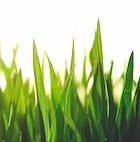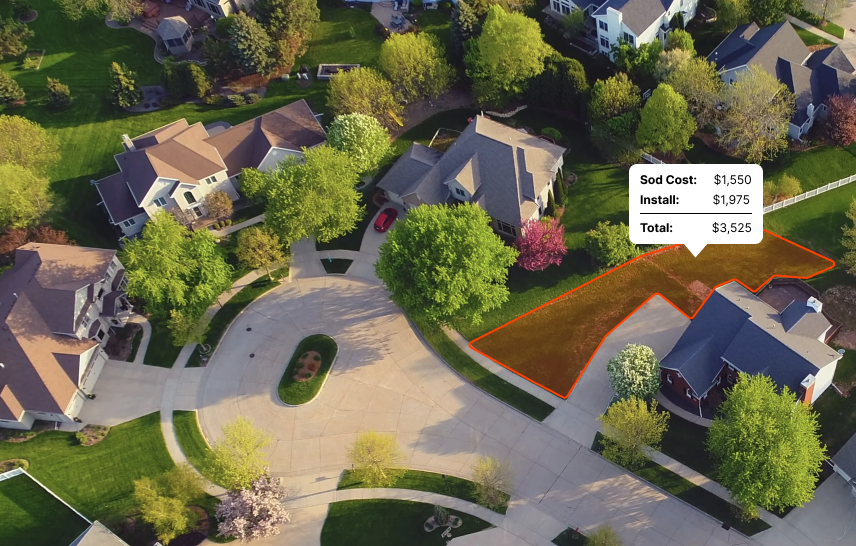Spring and fall are your go-to seasons for laying turf, and the resilient grasses of the Great Plains grass zone, bred to withstand drought, chill, and wind, reign supreme.”
Introduction
North Dakota, where winters linger and summers flash by, has a climate that's tough on turf. But cool-season grasses like Kentucky bluegrass and perennial ryegrass thrive in this rugged landscape, standing strong through frigid winters and revving up during the state's cool summers.
So, when should you roll out your green carpet in North Dakota? Stick to spring or fall.
The soil is refreshingly cool, offering ideal conditions for the grass to sink its roots deep and establish a solid footing. Summer in North Dakota can be a bit of a scorcher, leaving new grass parched, stressed, and struggling to take root.
The Great Plains grass zone, home to North Dakota, features grasses as hardy as the folks who live there. Drought, frostbite, gale-force winds – bring it on!
What are the best sod types for ND?
In the world of landscaping, not all grasses are created equal. Each thrives in a specific climate zone: cool, warm, or transition.
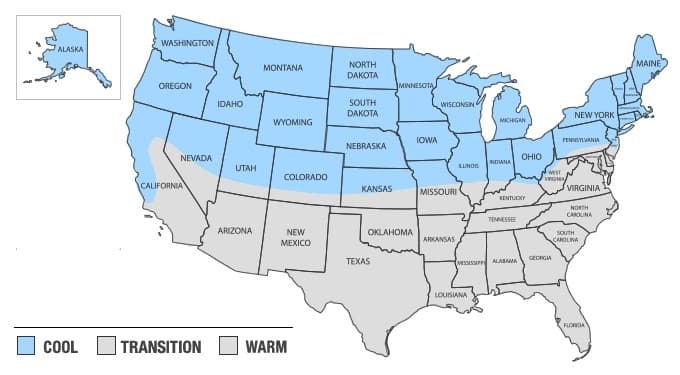
North Dakota, with its cool season climate, prefers a particular set of grasses that relish the lower temperatures. The following sods are the easiest to grow and maintain in North Dakota:
While it's possible to grow grasses meant for other regions with proper care, attention and timing, these are the most common grasses in North Dakota for residential lawns.
Level Up Your Lawn Skills
Once per week we'll send you an interview from someone who has mastered the art of lawn care.
Recommended species for shade
In the tall shadows of North Dakota, some grasses rise to the challenge. These are the champions of shade, the leafy green all-stars that don't need full sun to strut their stuff.
First, meet Fine Fescue. We love this guy. Tolerates shade, doesn't mind average soils, plus it's a native so it knows the North Dakota hood. In fact, there are four types of Fine Fescue, each one cooler than the last. Creeping Red, Hard, Chewings, and Sheep’s Fescue. These guys need at least four hours of sunlight; less than that and they might pull a fast one on you and start thinning out.
Next, allow us to introduce you to Ryegrass, both the annual and perennial kinds. They're basically the Clark Kent of grasses. Ordinary in full sunlight but, in less sunny situations, well, let's just say they perform unexpectedly well - performing about the same as Fescues with that magic four-hour sun exposure.
Finally, let's not forget about our friend, the Rough Bluegrass. It may sound like a grumpy old sod (pun intended), but it's actually a moist-shade-loving hero. If you live near water or have exceptionally wet soil, Rough Bluegrass could be your best bet. Be aware though, it needs around four to six hours of sunlight to thrive.
Here's the thing. There's no one-size-fits-all grass for shaded areas. You need to understand your land, its soil quality, the amount of shade you’re dealing with, and the drainage situation you've got going on. All these factors will determine which grass will flourish beneath your shadowy giants. So take a moment, respect the shade, and know with just the right grass choice, you can turn it into a green carpeted paradise.
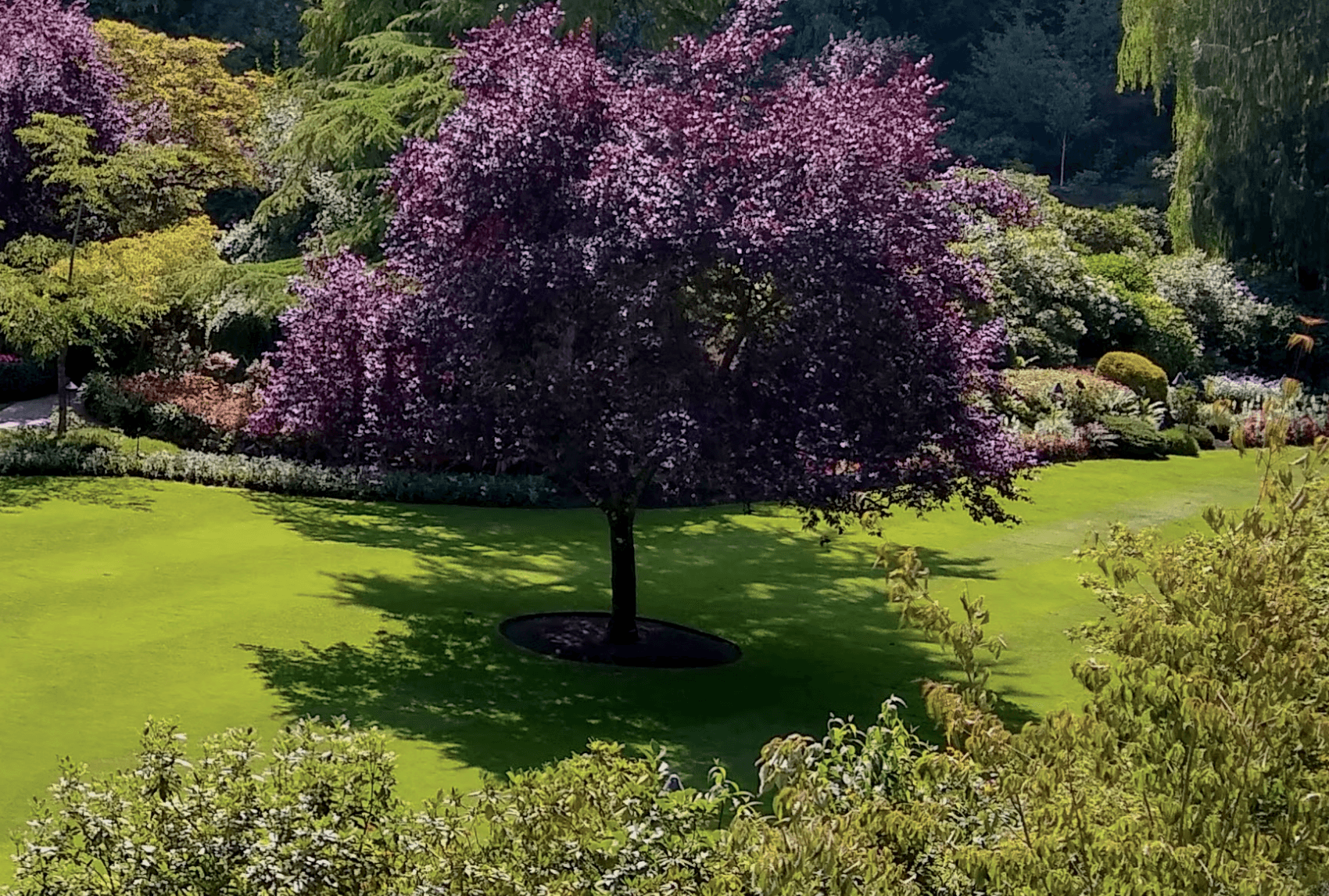
Recommended for full sun or partial sun
Choosing the right sod for your lawn depends heavily on the sunlight exposure in your yard. Different grass types have varying light requirements for optimal growth and appearance. Assessing whether your lawn receives full or partial sun is essential in selecting sod that will flourish and stay healthy in your specific environment.
Below are some sod options recommended for either full sun or partial sun conditions in ND:
| Grass Type | Sun | Good to Know |
|---|---|---|
| Tall Fescue | Partial | Tall Fescue is adaptable to a range of conditions, including partial sun, and is known for its deep root system and tolerance to drought. |
| Kentucky Bluegrass | Full | Kentucky Bluegrass prefers full sun and is prized for its fine texture, rich color, and ability to recover quickly from damage. |
| Perennial Ryegrass | Full | Perennial Ryegrass thrives in full sun and is known for its rapid germination, fine texture, and bright green color. |
| Fine Fescue | Partial | Fine Fescue is well-suited for partial sun and is appreciated for its fine texture, shade tolerance, and low maintenance requirements. |
What varieties stay green year-round?
As with anything agriculture related, there is some nuance to this question. There are many grasses that can stay green year round in but it depends heavily on your location within North Dakota as well as any microclimates that may exist.
The following grasses have the ability to stay green year round in North Dakota:
| Grass Type | Caveats |
|---|---|
| Tall Fescue | It typically stays green throughout the year in milder climates, given that it isn't overly stressed by heat or drought in the summer. |
| Kentucky Bluegrass | It can retain its green color for much of the year when well-maintained, though harsh winter temperatures can push it towards dormancy and a browner hue. |
| Perennial Ryegrass | It can stay vibrant and green throughout the year in many climates, unless conditions are extremely cold or dry. |
| Fine Fescue | It keeps its green color throughout the year in ideal conditions. If the winters are particularly harsh, it may lose some color. |
What is the best time to lay sod in North Dakota?
Since it is considered a cool-season location, the ideal time to lay sod is in early spring or early fall. These periods offer moderate temperatures, leading to less stress on the sod and providing optimal conditions for root establishment before extreme temperatures of winter or summer. Avoid the summer, as high heat can stress the sod.
As you can see in the image below, you'll notice the most shoot growth (the grass above ground) and root growth in the spring and fall for cool season grases:
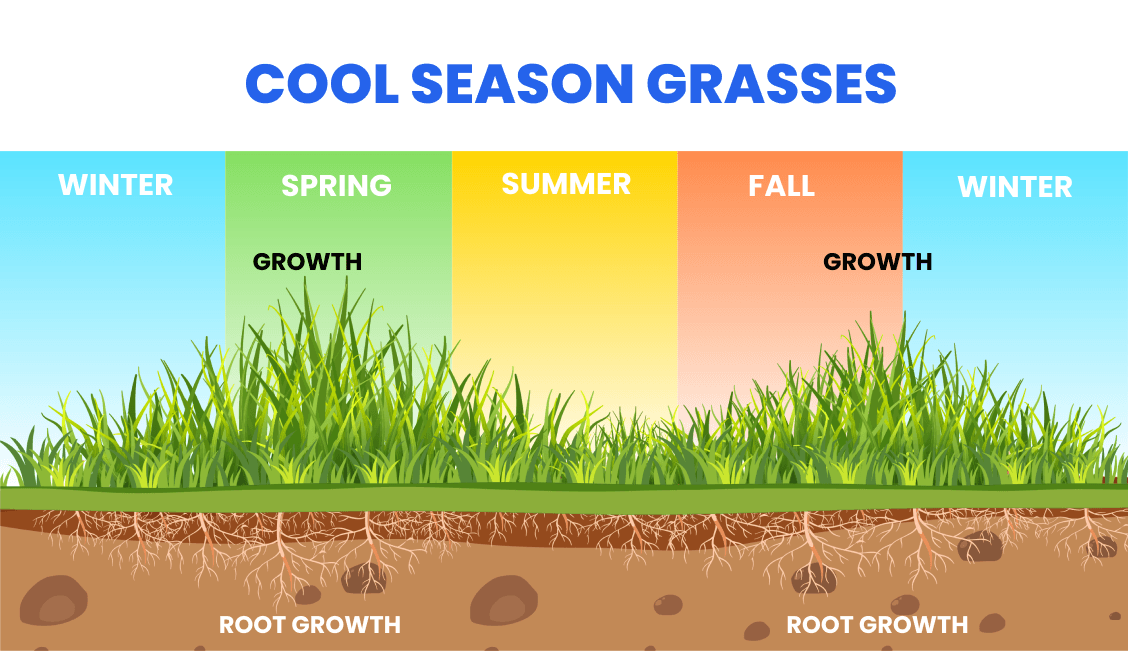
Find reputable companies for installing sod in ND
Here are the top problems you'll face when trying to get sod installed by a landscaping company:
- They're not transparent about pricing. You'll often get a quote that's way higher than you'd expect.
- They're hard to get ahold of on the phone or you'll reach out online but won't hear back.
- It's hard to pin them down for a specific date. Because you can only bring sod from the farm when there's decent weather, this causes some delays at times. It also has a short shelf life, so it's important to get it installed within a day or two of delivery.
We've done all the work for you. Click below to get a quote from one of the top installers in North Dakota.
